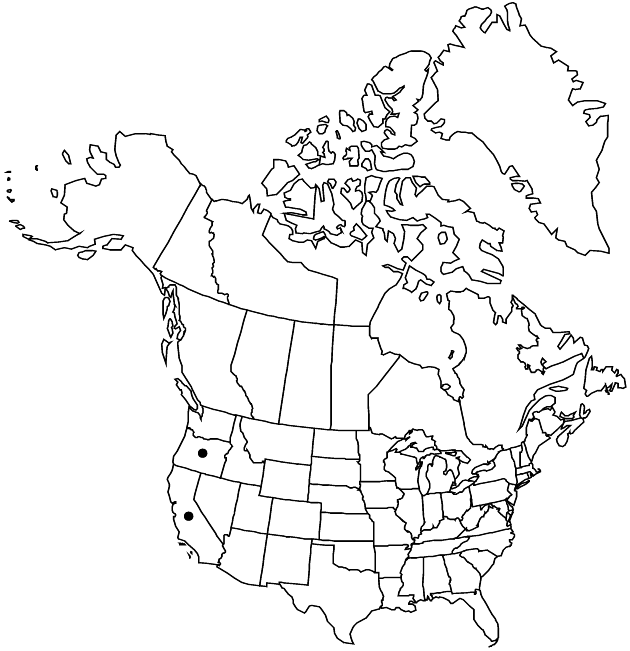Hieracium bolanderi
Proc. Amer. Acad. Arts 7: 365. 1868.
Plants 10–60+ cm. Stems glabrous or nearly so. Leaves: basal 5–9+, cauline 0–3; blades oblanceolate to spatulate, 35–95+ × 12–25+ mm, lengths 2–4+ times widths, bases cuneate, margins entire, apices rounded to acute, abaxial faces glabrous or piloso-hirsute (on midribs, hairs 5–8+ mm), adaxial piloso-hirsute (hairs 5–8+ mm, often tangled). Heads (3–)15–15(–40+) in corymbiform arrays. Peduncles glabrous or stipitate-glandular. Calyculi: bractlets 3–5+. Involucres campanulate to cylindric, (7–)9–10 mm. Phyllaries 8–13+, apices obtuse to acute, abaxial faces glabrous or stipitate-glandular. Florets 6–12; corollas yellow, 8.5–10 mm. Cypselae urceolate, 5–5.5 mm; pappi of 50–60+, stramineous to rufous bristles in 2+ series, 5–8 mm.
Phenology: Flowering Jun–Jul.
Habitat: Pine forests, serpentines
Elevation: 300–1700 m
Distribution

Calif., Oreg., Mexico (Baja California).
Discussion
Selected References
None.